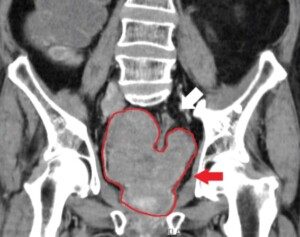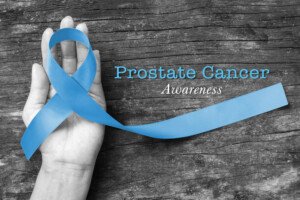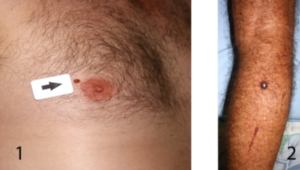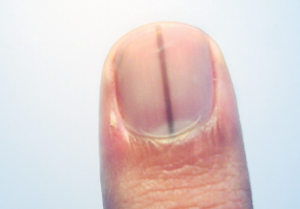Once breast cancer spreads to the bones, the prognosis for long-term survival is poor. But there are exceptions.
A survivor may go years “cancer free,” only to one day begin experiencing what seems like a sore muscle.
Eventually, an X-ray shows metastasis of the original breast cancer in a bone. This diagnosis marks the beginning of stage 4 disease, for which there is no cure.
The patient never again will hear “no evidence of disease” or “all clear.”
Longest Known Survival Following Breast Cancer Bone Mets Diagnosis
A case published by Dr. Joseph Kuechle and colleagues in 2014 tells the remarkable story of a woman who lived 26 years after being diagnosed with bone-only metastatic breast cancer.
She was 31 when she had a mastectomy for breast cancer in 1983.
Her cancer had already spread to two lymph nodes, but she completed treatment and went on with life.
About five years later she began having pain in her left forearm.
Imaging showed a destructive lesion in her ulna (the long bone in the forearm), plus another spot in one of her ribs.
A biopsy confirmed the bad news: The breast cancer had spread — but only to her bones.
Early Treatment and Setbacks
At the time, most patients with bone spread lived only a few years.
This isn’t because tumors in the bone directly cause death.
It’s because if breast cancer “sleeper cells” could start proliferating in the bones, then they can also begin proliferating in organs such as the lungs and brain – deadly places for mets to develop.
Dormant and undetectable breast cancer cells may already be in vital organs at the time of bone mets diagnosis.
Or, cells from the bone masses may break away and settle in the liver or a lung.
This patient’s doctors took an aggressive but hopeful approach.
She received radiation therapy to both affected bones and began tamoxifen, a hormone-blocking drug that’s been around for decades and is still widely used today.
Unfortunately, the tumor in her arm kept growing, eventually weakening the bone so much that it caused an elbow dislocation.
The team decided to amputate the left arm above the elbow.
She also had surgery to remove the affected rib and surrounding chest wall tissue.
When the cancer came back in the arm a few years later in 1996, she underwent a higher-level amputation and another chest wall resection.
A Surprising Turn of Events
You might expect that kind of history to end badly — but hers didn’t.
Fast-forward nearly two decades, and she was still alive, in her early 60s, working at the same job she’d had before, and using a prosthetic arm.
This stunning case was published in the December 2014 International Journal of Surgery Case Reports by Kuechle et al.
Since then, there’ve been no published updates publically available on the patient.
Why This Case Matters
Breast cancer that spreads to bone is considered incurable, but not always hopeless.
Doctors now recognize that bone-only metastasis can behave very differently from cancer that spreads to organs.
In some people, it progresses slowly, almost like a chronic condition.
The authors suggested her survival may have been due to a combination of factors: limited number of bone lesions, early aggressive treatment, hormone sensitivity and possibly a less aggressive tumor biology.
That said, this case is extremely rare. Most people with metastatic breast cancer live a few years, not decades.
In larger studies, the median survival for bone-only cases is around four to five years.
In Plain Terms
So in everyday language: this woman beat the odds — massively.
Her cancer spread to her bones, she lost an arm, and yet she lived a full, active life for at least 26 years following the bone mets diagnosis.
It’s possible that her young age upon original diagnosis played a role.
My sister received her bone mets diagnosis about seven or eight years after the original diagnosis (I’m not sure about the timeline, but that’s a fair estimate).
But the bone mets diagnosis came when she was around 64.
Most healthy 64-year-olds don’t even live another 26 years.
However, my sister’s four times yearly scans of her bone tumors have been downgraded to three times a year, because the masses have been “stable” for so long.
The downgrade also applies to chest CT scans: three times a year now instead of four.
The masses have shrunk and have remained in that shrunken inactive state.
Furthermore, she does gym and cardio and leads an active busy life, while permanently on a medication to keep the tumors at bay.
Caught at Stage 2B; Could’ve Been Stage 0
My sister likely had very dense breasts, because I had them.
When the 2D (digital) mammogram technician informed me that I had “extremely dense” breasts (my state requires this disclosure by the tech), I wasted no time digging into this, learning that dense breasts is a risk factor for breast cancer.
From that point on, I’ve had only 3D mammograms plus ultrasound, every single year – and always with negative results.
The duo of 3D mamms (tomosynthesis) and ultrasound is outright superior at detection when compared to just the 2D mamms.
When I learned of my sister’s diagnosis, I opted for a preventive double mastectomy.
Through emails, I learned that my sister had had only the 2D mammograms.
She had never skipped a year, so I’m inclined to believe that the stage 2B that was caught that fateful day had already been in progress at the time of the previous year’s mammogram.
I’m inclined to believe that it’d been missed that previous year, because a malignant tumor can mimic the appearance of dense breast tissue on a digital mammogram.
What if, that previous year, she had undergone both tomosynthesis and ultrasound?
It’s very possible, though not guaranteed, that a much earlier tumor would’ve been discovered, perhaps stage 0 or in-situ, which is far less likely to produce sleeper cells that end up in the bones.
I had to pay out of pocket for both tomo and US because my health plan didn’t cover these as screening tools.
Find out if you have dense breasts, then get going on the tomo and US, even if you must pay out of pocket.
Great Analogy of 2D vs. 3D Mammogram
In a two-dimensional mammogram, we have a person standing on the ground, remaining in that spot, just outside of a forest, trying to spot a sleeping fox inside the forest.
In a three-dimensional mammogram (tomosynthesis), the person is flying above the forest, looking down at it, trying to find the fox.
![]()










































